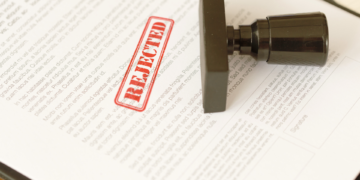Crafting a research paper that stands out can be a challenging task, but applying the right strategies can elevate your work from a standard submission to a masterpiece. Whether you’re aiming for publication in a high-impact journal or simply want to ensure your research is well-received, these top 5 research writing hacks can help transform your paper into a compelling and impactful piece.
1. Start with a Strong Outline
A well-structured outline is the foundation of a well-organized research paper. It helps you organize your thoughts and ensures that your paper flows logically from one section to the next.
1.1 Define Your Research Questions
- Clarify Objectives: Clearly define the research questions you aim to answer. This will guide the focus of your paper and ensure that your arguments are relevant and targeted.
- Prioritize Key Points: Identify the key points and arguments that need to be addressed. Prioritize these points in your outline to maintain a logical flow.
1.2 Create a Detailed Structure
- Introduction: Outline the introduction, including background information, research objectives, and the significance of the study.
- Methods: Plan the methodology section, detailing the research design, data collection methods, and analysis procedures.
- Results and Discussion: Structure the results and discussion sections, ensuring that each finding is clearly presented and discussed in relation to the research questions.
- Conclusion: Outline the conclusion, summarizing the main findings and their implications.
1.3 Use Subheadings
- Organize Content: Use subheadings to break down each section into manageable parts. This improves readability and helps guide the reader through your arguments.
2. Write a Captivating Abstract
The abstract is often the first (and sometimes only) part of your paper that readers will see, so it’s crucial to make it engaging and informative.
2.1 Summarize Key Elements
- Research Problem: Clearly state the research problem or question you are addressing.
- Methods and Results: Briefly describe the methods used and the main results obtained.
- Significance: Highlight the significance of your findings and their implications.
2.2 Be Concise and Clear
- Limit Length: Keep the abstract concise (usually 150-250 words) while ensuring it covers all essential aspects of your research.
- Avoid Jargon: Use clear and accessible language to make your abstract understandable to a broad audience.
2.3 Incorporate Keywords
- Improve Discoverability: Include relevant keywords that accurately reflect the content of your paper. This enhances the paper’s visibility in search engines and academic databases.
3. Use Engaging and Clear Language
Effective communication is key to making your research paper impactful. Use language that is engaging and easy to understand.
3.1 Avoid Overly Complex Sentences
- Simplify Language: Write in clear, straightforward sentences. Avoid overly complex or convoluted language that can obscure your main points.
- Active Voice: Use the active voice where possible, as it makes your writing more direct and engaging.
3.2 Be Precise and Specific
- Detailed Descriptions: Provide precise and specific descriptions of your methods, results, and interpretations. This enhances the credibility of your research.
- Avoid Ambiguity: Ensure that every statement is clear and unambiguous to avoid misinterpretation.
3.3 Use Visuals Effectively
- Graphs and Tables: Incorporate graphs, tables, and charts to present complex data visually. Ensure they are clearly labeled and referenced in the text.
- High-Quality Images: Use high-resolution images and figures to enhance the presentation of your research.
4. Revise and Edit Thoroughly
Revising and editing are critical steps in the writing process. They ensure that your paper is polished and free from errors.
4.1 Review for Structure and Flow
- Logical Organization: Check that your paper is logically organized and that each section flows seamlessly into the next.
- Consistency: Ensure consistency in terminology, formatting, and style throughout the paper.
4.2 Check for Grammar and Style
- Proofread Carefully: Look for grammatical errors, typos, and stylistic inconsistencies. Use grammar checking tools to assist in this process.
- Peer Review: Consider having colleagues or mentors review your paper. They can provide valuable feedback and catch errors you might have missed.
4.3 Verify Accuracy and Citations
- Data Accuracy: Double-check all data and results for accuracy. Ensure that all calculations and analyses are correct.
- Proper Citation: Verify that all sources are correctly cited and included in the reference list according to the journal’s citation style.
5. Tailor Your Paper to the Target Journal
Each journal has specific requirements and preferences. Tailoring your paper to meet these can improve your chances of acceptance.
5.1 Understand the Journal’s Scope and Audience
- Journal Focus: Familiarize yourself with the journal’s focus and audience. Ensure that your paper aligns with their scope and interests.
- Recent Publications: Review recent articles published in the journal to understand their style and content preferences.
5.2 Follow Submission Guidelines
- Formatting Requirements: Adhere to the journal’s formatting requirements, including manuscript layout, reference style, and figure formatting.
- Submission Checklist: Use the journal’s submission checklist to ensure that all required components are included.
5.3 Craft a Compelling Cover Letter
- Highlight Contributions: Write a cover letter that highlights the significance of your research and why it is a good fit for the journal.
- Address Editors: Address the cover letter to the editor by name, if possible, and follow any additional instructions provided by the journal.
Conclusion
Transforming your research paper into a masterpiece requires careful planning, clear writing, and thorough revision. By starting with a strong outline, writing a captivating abstract, using engaging language, revising meticulously, and tailoring your paper to the target journal, you can enhance the quality and impact of your research. Apply these hacks to elevate your paper and increase your chances of publication success.






































